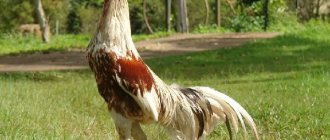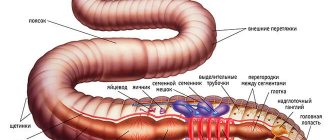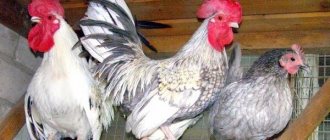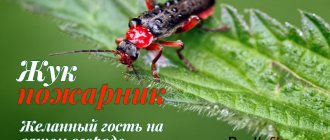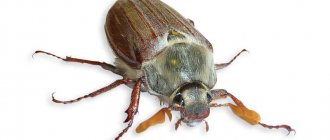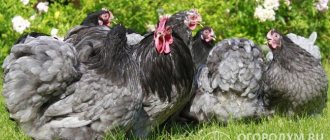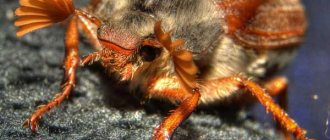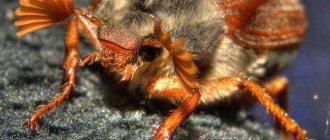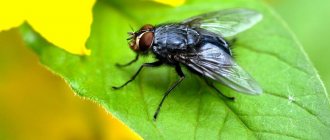Not every novice and experienced goat breeder knows how to properly and when to trim animals’ hooves. Some farmers argue that the goat does not need such a simple procedure. Experts and veterinarians say that timely hoof trimming will help eliminate a dangerous disease. It is recommended that goats have their hooves trimmed regularly, but you need to know the specifics of this procedure.
Goats' hooves are trimmed to prevent disease.
Equipment and tools for trimming goats' hooves
A goat, like other ungulates, is in dire need of this procedure.
After all, if small rodents grow teeth, then goats constantly grow hooves and horns. In order to provide your animal with proper care, you need to choose the time to trim the limbs. After all, they cannot get rid of excess growths on their own, like, for example, free-living representatives of this species. And breeders who are sure that their pet does not need this important procedure are deeply mistaken.
When to prune
Experts recommend pruning pets in the spring. After all, in the summer there is no need for such a procedure, since a goat that comes out of the stall during a warm period walks a lot on hard ground, and therefore its hooves wear down without outside help.
Such treatment, of course, is unlikely to be to the taste of any domestic goat, so the owner of the animal should prepare himself psychologically to carry out the procedure calmly.
It is also recommended to prepare in advance all the tools and other equipment that will be needed during the work process.
Remember, if trimming is not done in time, the overgrown and curling hoof horn can cause the animal a lot of trouble - disrupt the position of the legs and even provoke pain in the joints, which will have a detrimental effect on health.
Special devices and tools will help you better cope with the task.
You should not think that for the procedure it is enough to have a sharpened knife on hand. Some devices help to better deal with the most problematic areas, and a knife in this case is by no means the most convenient solution.
You can trim with the following tools (although not all of them are convenient):
- special hoof scissors. The best option. We recommend choosing a tool with a medium-length handle that fits your palm. A small handle will require more force, a long handle will impair the accuracy of trimming;
- special hoof knife. Used by experienced farmers when they have to straighten crooked hooves of a goat. But you have to use it extremely carefully - the animal can suddenly jerk its limb, and the person risks injuring his hand with a sharp object;
- a simple sharp knife. It is recommended to use it with a comfortable handle and a blade that is not very thick - reduce the effort required. As in the previous case, there is a risk of injuring your hand if the animal suddenly jerks its leg;
- garden pruner. Its use is limited. For example, it is convenient to cut off the processes of the hooves from the outside, but using it to level the hooves on the inside is very problematic;
- gardening scissors. With their help, it is easy to get rid of excess growths, but you will not be able to trim the hoof - you will have to use another tool;
- metal scissors. Many specialists use them in their work, but it is important to ensure that the blades are well sharpened. Scissors are only suitable for people with strong hands, since a lot of force has to be applied - a goat’s hoof is very hard;
- hacksaw for metal. The work requires a fair amount of skill, and it is advisable to immobilize the animal. The most difficult part of using a hacksaw is giving the hoof the required roundness;
- simple large scissors. You can also use them, although you have to suffer. During operation, such tools become very dull, so experts recommend using them when cleaning growths between the fingers, i.e., when treating areas with difficult access.
Although we have not gone through a complete list of possible tools, the main difficulties should already be quite clear to our readers. Sometimes you have to choose from what is at hand, so we tried to characterize the most common tools available on every farm
To trim the hoof platform, you can use both specialized equipment in the form of a special device (machine) and improvised equipment. The operation is carried out using the following items:
- A hoof trimming knife is a special hand tool. In this way, growths are removed in case of severe deformation. It is dangerous due to possible injury to the farmer (if the animal makes a sudden movement with its leg).
- Hoof shears are a convenient device if the handle is of medium size. Too long reduces accuracy, short - requires investment of effort.
- A garden pruner is a tool that works well with the outer layer. Internal alignment is challenging.
- Metal shears are a device that requires a lot of force.
Read more: When walnuts ripen, what to do after harvesting
Trim the fur after brushing out the fluff in warm weather. It is worth cutting with a dry cover, after having stood for 10-12 hours without water or food.
The fur is removed in two ways: manually or mechanically. Goats are trimmed using scissors or special clippers. The latter method has a great advantage if you need to work with a herd. Manual shearing is used in households (2-3 livestock), and a person is required to have a certain skill and physical fitness.
Here are the brands and models of some electrical appliances and the features of their operation:
- The VORTEX hair clipper has a cooling system, which allows it to be used for a long time. Some models allow you to adjust the pressure between the blades. One sharpening is enough for about 50 heads.
- FORZA SC-350 M – suitable for all types of fur. Thanks to the engine and updated design, cutting time takes much less. When turned on at full power, you can cut even dirty, caked wool.
- GTS-2012 has a built-in Swiss motor, very economical and almost does not heat up. Details increase the durability and practicality of the tool. Fits comfortably in the hand.
- MSU-200 is the most popular domestic machine. Turns on from a current frequency converter. The tool has a built-in asynchronous motor, it works in any weather. The device does not contain carbon brushes.
After cutting, the blades of the clippers are thoroughly cleaned. Manufacturers often include a small brush in the kit. Wipe the device with a soft cloth.
The main errors in the operation of devices are: unsuitable knives, incorrectly inserted blades, neglect of cleaning, improper sharpening.
Tools
To do everything right, you need to make a good choice in favor of quality tools. Trimming a goat's hooves can be done with different tools.
Hoof shears are a must have for every goat breeder.
The approach to direct choice is always tricky. It may seem that even a sharpened knife can cope with the task, but that’s not the case. Trimming a goat's hooves, so as not to provoke disease, can be done with a variety of tools:
- Hoof shears. An ideal option for high-quality trimming of the hooves of kids and adult goats. It is recommended to select a handle of medium length so that you do not feel discomfort during the process and can do everything quickly.
- Hoof knife. If an animal has curvature of its hooves, you should give preference to this tool. But there is still a risk of injuring your hand when the animal jerks its leg. Recommended for use by experienced breeders only.
- An ordinary knife. This tool must first be sharpened well. The blade should be thin and have a comfortable handle. When the goat jerks, there is a risk of the knife slipping and further cutting.
- Garden secateurs. The outer processes of the hoof provoke disease in the goat, so this option is suitable for quickly getting rid of the defect.
- Garden shears. Ideal for claw trimming procedures. But you won't be able to shape your hoof using them. In this case, additional tools are selected.
Feel free to give preference to metal scissors. They are suitable for cutting, but only if they are well sharpened. One inconvenience during work is the increased load on the hand.
The choice of suitable tools is large, so choosing the ideal option will not be difficult. The list is not limited to the designated tools, so the final choice depends only on you and your individual comfort.
After choosing the appropriate option, you can begin to trim the hooves in stages, which, with the right approach, is done very quickly and efficiently.
Trimming a goat's hooves should be done with a convenient tool.
Necessity
Of course, no one does any pruning for wild goats living in nature; they don’t need it. Constantly moving from place to place in search of food, animals are able to grind their hooves on sharp stones on their own. As a result, goats’ hooves all year round have the exact shape that allows them to graze without risking their lives.
It’s a different matter for animals that constantly live in a warm goat’s nest, winter on soft bedding and move on a flat floor. In such “greenhouse” conditions, goats’ hooves grow, which over time leads to a number of unpleasant consequences:
- hoof deformation creates discomfort for the animal;
- The goat begins to show various diseases of the limbs.
Preparation
Before trimming, it is important to assess the temperament of your horned pet. If she is violent, excessively obstinate and active, then carrying out the procedure alone will be impossible. There are several options for getting out of this situation:
- Agree with the veterinarian about administering anesthesia for the duration of the procedure (minus - unusable milk for 2 days).
- Ask an experienced farmer for help: while one holds the pet lying on a barrel, the second trims the goat’s hooves.
- Use of sedatives (may cause side effects, milk is not allowed to be used as food during the day)
If everything is in order with the goat’s temperament and she behaves calmly, you can simply tie her up (to fix her in one place). Preparation for the operation involves checking and washing the instrument.
There are a number of rules that farmers rely on when trimming goats' hooves. If the technique is incorrect, there is a risk of hurting your pet or cutting off your hand. Stages of the operation:
- Wipe the hoof platform, tools and hands with an antiseptic (a solution of potassium permanganate or chlorhexidine is suitable).
- They clean out the remaining soil and remove dirt from the hoof horn.
- Trim off excess growths on the outside of the goat's fingers.
- Equate the heels to the level of the toes.
- Remove cartilaginous growths from the inside and level them.
The hoof platform should be flat and level.
After surgery, it is important to look after your goat's hooves. When trimming, there is a risk of damage to the fragile tissues located next to the hoof. After completing the trimming of the platform, the limbs should be treated with vitriol solution. This is necessary to prevent bacteria from entering the hoof cavity. Otherwise, the animal may get sick and stop stepping on sore limbs.
The goat's legs should be examined for several days after surgery to prevent possible complications. With proper care, the goat will delight the farmer with high yields of high-quality milk.
Before the procedure, the animal must be immobilized so as not to injure it.
Since trimming hooves on small livestock is a fairly stressful procedure, the animal must be properly prepared before it begins. This requirement especially applies to individuals undergoing surgery for the first time, as well as those who have a very restless temperament.
Read more: Pomegranate indoor care at home, how to grow a detailed description
There are several ways to secure an animal so that it remains motionless throughout the entire process.
- If the goat has a violent disposition, it is recommended to simply put it to sleep using anesthesia or put it into a semi-conscious state using a tranquilizer. This is extremely rare, but sometimes this method is still practiced.
- For a goat with a calm disposition, it is enough to simply tie it, taking it to such a distance that the leash becomes taut and hampers its movements.
- If a calm animal begins to kick during the procedure, it is better to throw it on its side and then call someone for help. The helper will have to hold the goat on the ground, calm it down by stroking and talking, and feeding it a treat. In this state, the animal's head must be pressed to the ground all the time.
Why should you trim?
Goat hooves grow throughout the animal's life. If they are not in constant movement on hard surfaces, the legs become overgrown with cartilage tissue. The platform becomes uneven and lumpy. Pets experience severe discomfort. They are susceptible to injury. Incorrect positioning of the legs provokes bone deformation and joint inflammation. The goat begins to limp and have difficulty moving.
The owner must ensure regular pruning. Due to the poor condition of the legs, the goat loses productivity (this indicator is affected by any stress on the goat’s body). To carry out such an operation you will need a tool. If a farmer is doing this for the first time, it is better to ask for the help of an experienced person to avoid injury to both the pet and his own hand.
Important! Trimming a goat should be done carefully and in compliance with safety precautions.
Deadlines
It is advisable to carry out hoof care at least twice a year - in spring and autumn.
Annual hoof care involves performing the procedure at least twice. This is due to the following reasons.
- The first pruning is done in the fall before the onset of cold weather. In this case, the owners prepare the livestock for the upcoming winter so that the goats feel at ease on soft bedding. Also, with trimmed hooves, it will be more convenient for goats to move on a flat floor.
- The second time the procedure is performed in the spring, when it is time to take the animals out to pasture. During the winter, the goat's hooves grow larger, and it becomes difficult for livestock to move on such legs over rough terrain.
However, as we have already mentioned, hoof trimming is an individual matter. Some breeders claim that their animals do not need the procedure at all, while in other animals even small growths cause severe discomfort - for them this has to be done much more often. In other words, the farmer needs to monitor the condition of each individual all year round and prune as often as necessary.
When to carry out
To determine the exact timing and frequency of trimming goat hooves, it is important to consider their condition. If the goat moves little, the cartilage grows quickly and the animal experiences discomfort - the procedure is carried out 3 times a year. Many farmers believe that the operation should be carried out 2 times a year: at the beginning of the winter season and at its end.
In winter, pets are inactive, sit on a soft straw layer, and eat concentrates. All this contributes to the active growth of the animal’s hoof platform (before such a season, it is necessary to tidy up the goat’s legs). After winter, treatment is also required (before the first exit to pasture).
Important! When trimming a goat's hooves, the farmer will need to follow certain techniques to perform the operation correctly.
The following diet is recommended for feeding a pregnant goat:
- 2 times a week give the goat 10 tablets of calcium gluconate along with 5 drops of vitamin Trivit or (instead of Trivit) 1 tsp. vitamin mixture "Zinka". For better absorption of calcium, vitamin D is needed, which is contained in these vitamin supplements.
- At least 3 times a week, give the goat a bowl with a vegetable mixture of carrots, cabbage, beets, pumpkin (1/4 of the mixture) - about 2.5 kg in total.
- The amount of feed and oats per day should be at least 0.8-1 kg per goat. Avoid whole wheat: it is poorly digested and often leads to stomach upset. In crushed feed, its amount should not exceed 30% of the total volume of the grain mixture.
It is very good to give goats sunflower cake - 100-150 g per day (steamed), whole oats, granulated feed (it is not steamed), i.e. a ready-made, steam-treated product enriched with vitamins and microelements.
- What is a hoof
- Structure of the coffin bone
- Front and rear hooves
The coffin bone in a horse is a kind of shock absorber that prevents injury when moving. Therefore, a horse’s hoof is the main functional component of the animal’s body, affecting its health and performance. The structure of the horse's hoof allows the horse to effectively distribute weight, providing better traction with the ground.
Structure of the coffin bone
The structure of the horse's hoof is special, because the thickness of the stratum corneum of the hoof varies in individual areas. It contains:
- sock;
- heel;
- sole;
- crown ring;
- arrow;
- corner;
- side wall;
- heel wall;
- toe wall.
It is easy to find the coronoid ring in the structure of a horse's hoof. It is located at the hair growth line. The hoof bone and soft cartilage are covered by a horny wall consisting of:
- glaze;
- tubular horn;
- leaf horn.
The sole of the horse's hoof differs from other parts in that it does not have a stratum corneum. It consists of a horny arrow and a white line. The horny arrow is needed to prevent slipping. It is located like a wedge between the legs of the sole. The white line is made of non-sensitive fabrics and is therefore suitable for driving when forging nails. If the condition of the hooves is not taken care of, frog rot may develop, which will lead to a serious limb problem.
Front and rear hooves
A horse's front and rear hooves differ in shape and size. The hind ones are smaller than the front ones, the sole is concave inward. The front hooves have a larger frog and a low heel bone.
Horses have their hooves trimmed periodically as the hoof horn grows. Hoof trimming corrects leg position and distributes weight correctly. The hooves are also trimmed before shoeing to ensure a good fit of the horseshoe to the sole. Occasionally, hoof trimming is done for medical reasons and for some horseshoe diseases.
Read more: Grape disease on leaves pimples tubercles how to treat
Horses of riding breeds have dense hooves and elastic horns, while heavy horses have loose hoofs and soft horns.
The difference is also visible in size - the draft horse has a larger hoof. The shape of the hoof is also different: the heavy hoof has flat walls and a low heel, while the horse hoof has round walls and a high heel.
The hooves have different types of colors: dark, light, striped and mixed. But the dark ones are considered the strongest hooves.
A simple horse's hoof serves many functions, which is why good hoof care is so important.
Carrying out the procedure
First, let's clarify the question: “When to trim hooves?” The point is that an individual approach is used here. For example, if we talk about wild goats, they don’t need trimming at all, because they grind their hooves themselves on different stones. Also, some breeders may claim that their dogs do not need pruning. But this is most likely an exception to the rule. In a household, every goat needs care for its hooves from its owner.
Some individuals need this more often, and some less often. According to general recommendations, pruning should be carried out at least 2 times a year. The first time is before winter, and the second time is in the spring, before taking the animal out to pasture. Let's find out why this is so. By pruning for the first time, we prepare the goat for wintering on soft bedding.
Now, during the winter, a goat’s hooves on soft bedding grow greatly, because she cannot wear them down even a little naturally. Accordingly, in order for the animal to be released to pasture without fear for its health, the pruning procedure must be carried out again. But there is one catch: in some individuals, even a slight increase in hoofs leads to severe discomfort. Therefore, you should always monitor your animal and trim as often as you see fit.
If we talk about how many pruning methods there are, then everything is simple. For example, if we talk about the pruning procedure itself, then there is only one method. And if we classify methods based on what tools to use or how to fix the animal and limbs, then we can distinguish several options.
If the goat is not undergoing surgery for the first time and behaves calmly, circumcision is carried out as shown in the figure. The step-by-step steps are as follows.
- First, the hoof horn is cleaned of all the dirt that has accumulated under it.
- The horn is cut from the outside of the animal's fingers.
- The “heels” of the hoof are level with the toes.
- The hoof is leveled. All soft growths on the “heels” and toes are removed until their surface becomes leveled and flat. The surfaces of the fingers are aligned to one plane, otherwise it will be uncomfortable for the animal to walk.
The procedure is considered complete when the animal’s hooves take on this appearance.
The last operation is to disinfect each hoof by soaking it in a two percent solution of copper sulfate or creolin. This will reduce the risk of infections in wounds and avoid other dangers.
Giving a goat a manicure
Tools
The first thing we need to do is prepare the necessary tools. This simple procedure requires a rather cunning approach in choosing tools. It may seem to some that this could be done with an ordinary well-sharpened knife, but that was not the case. Now let's look at what tools you can use to trim and why a knife is not the best solution.
- Hoof shears are a great option for trimming hooves. It is advisable to choose a handle with a medium length, since with a short one you will need to put in quite a lot of effort, and with a long one, the cutting accuracy will decrease.
- Hoof knife - convenient to use when the hoof is bent. There is a risk of injury to the hand if the animal jerks its leg. Suitable for experienced professionals.
- An ordinary knife - this tool should be quite sharp. The blade should not be too thick, and it should also have a comfortable handle, because when trimming hooves with a knife you will need to put in quite a lot of effort. Then there is a high risk of cutting your hand when the knife slips if the goat jerks violently.
- Garden pruning shears - good for removing outer hoof growth, but difficult to trim and trim inside.
- Garden shears are also good for this procedure. But they are almost impossible to properly align the hoof. Therefore, you will need an additional tool.
- Tin snips are great for cutting, but you need to make sure the tool is sharp enough. The only inconvenience is too much force on the hand (the hoof is quite hard).
- Ordinary large scissors - you can cut with them, but you will have to suffer for a long time. Also, after the procedure, the instrument will most likely become very dull. It's best to use them to clean small areas in hard-to-reach places, such as build-up between your fingers.
- A hacksaw for metal – some craftsmen use this tool quite skillfully. The difficulty is to properly align the roundness of the claw, and when working with a hacksaw, the animal must be completely immobilized.
As you can see, the choice of tools is quite large. It can also be said that this is not a complete list of all possible options. Therefore, the choice is yours, based on what is at hand. Now let's look at the second stage of pruning - this is the preparation of the animal itself.
Preparing the animal
As you know, hoof trimming is a fairly stressful procedure for goats. Therefore, it is not so easy to carry out, especially if your pet is experiencing it for the first time. Also, pruning should not be done during pregnancy, as this can lead to miscarriage. Now let's get back to preparing the animal.
So, it will be a big problem if your pet has a rather violent temperament. In this case, you will even have to use a tranquilizer or even anesthesia (this method is almost never practiced). If your goat has a calm disposition and you are sure that she will calmly endure the procedure, then you can simply tie her in such a way that she stands on a tight leash and trim, as shown in the photo below.
Trimming the front claw of a standing goat
Trimming the hind hooves of a standing animal
Cleaning the remaining claw
But if nothing works, then you need to throw the animal on its side and call someone for help, so that he doesn’t let the goat get up and calms it down, treating it with treats or just petting it. Also, do not forget that the animal’s neck should be bent to the ground as much as possible. After such preparations, you can begin pruning.
Trimming stages
The first step is to remove all dirt from under the hoof horn.
Then the hoof horn is cut off from the outside of the goat's toes.
Next, the “heels” are trimmed to the same level as the toes.
Finally, you need to level the hoof. To do this, the soft tissue on the toes and “heels” of the animal is cut off. This is done until the surface becomes flat and even. In this case, both fingers should be aligned to the same plane.
At the end of the procedure, the goat's hooves should look something like the one shown in the photo below.
Also, after trimming, do not forget to soak the goat’s hooves in a 2% solution of creolin or copper sulfate. That's all, the procedure was successfully completed. We wish you good luck in carrying out this difficult, but quite simple task!

